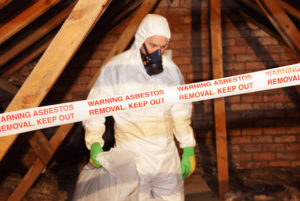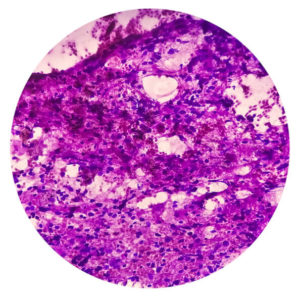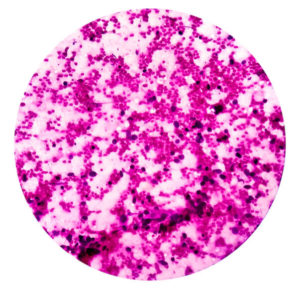Lung Cancer Tumor
Tumors may form in your body if you have lung cancer. Doctors can find a lung cancer tumor using different tests and recommend treatments to shrink or remove it. Below, learn about the steps to take if you have a lung cancer tumor and if we can help you secure compensation.
What Is a Lung Cancer Tumor?
Cancerous tumors form because cancer cells divide faster than healthy cells. As cancer cells grow, they can accumulate into tumors.

If you have lung cancer, there may be one or more tumors inside your body. A lung cancer tumor will start small and grow bigger, with some reaching the size of an orange.
Knowing you have lung cancer tumors within your body can be scary. Thankfully, help is available. A health care team can determine a plan to remove or shrink the tumors after you’ve been diagnosed.
Further, it may be possible to get compensation to cover the costs of treating your lung cancer tumor. Lung Cancer Group can help you and your loved ones pursue financial aid if eligible. Get started with a free case review right now.
- Access Financial Aid and Justice
- Learn About Your Options
- Contact Us for Free

What Causes a Lung Cancer Tumor?
Lung cancer cells become cancerous and form tumors due to genetic mutations, according to the American Lung Association (ALA). The most common cause of these genetic mutations is cigarette smoking.
Cigarettes contain over 70 cancer-causing substances and over 7,000 chemicals in total, according to the Memorial Sloan Kettering Cancer Center. Your risk of a lung cancer tumor increases depending on how much and how long you smoked.
Exposure to secondhand smoke (if you were a non-smoker), air pollution, radon, asbestos, and other cancer-causing substances can also cause lung cancer tumors to form.
Asbestos and Lung Cancer Tumors
Asbestos exposure can lead to someone developing lung cancer tumors even if they smoked.


Asbestos fibers can get stuck in the lungs and irritate healthy cells for decades, possibly contributing to lung cancer tumors forming 10-50 years after exposure.
Many asbestos lung cancer tumors could have been prevented. Makers of asbestos-based products knew the risks as early as the 1930s but hid the truth for decades to make money. This negligence put millions of people in danger of asbestos lung cancer.
Call (877) 446-5767 now if you developed a lung cancer tumor and were ever exposed to asbestos. Compensation may be available.
Lung Cancer Tumor Symptoms
Lung tumors grow in and around airways, causing symptoms like difficulty breathing. Other lung cancer symptoms may appear as more tumors form in other parts of the body due to cancer metastasis (spread).
- Appetite loss
- Chest pain
- A cough that doesn’t go away
- Coughing up bloody or dark sputum (mucus from the lungs)
- Hoarseness
- Shortness of breath
- Weight loss
If lung tumors block major airways, the patient may also suffer from recurring pneumonia, bronchitis, or other similar health problems.
Many patients won’t have symptoms until a lung cancer tumor has grown and spread. This can make tumors sometimes harder to treat if they’ve spread too much.
If you don’t have symptoms but smoked or were exposed to asbestos, see a doctor to get a lung cancer screening. A screening can help doctors detect cancer even before symptoms appear.
Diagnosing Lung Cancer Tumors
Doctors typically diagnose a lung cancer tumor with a series of steps. They first must investigate a patient’s symptoms before taking scans of the lungs.
Imaging scans used to diagnose lung cancer tumors include:
- Chest X-rays: A low dose of radiation is used to see inside the chest and lungs
- CT scans: Multiple X-rays are taken from different angles so doctors can get a better look into the body
- MRI scans: Images are created using magnetic fields and a special dye
- PET scans: Doctors can see into the lungs using a radioactive sugar substance
“Chest X-rays, CT, MRI, and PET scans help detect and diagnose your type of lung cancer tumor. They are interpreted by radiologists with special training in thoracic and pulmonary conditions, including lung cancer.”
— Duke Health
Doctors may use other tests to look for lung cancer tumor markers or substances that set a tumor apart from healthy tissues. Common marker tests look for lung cell gene mutations to determine whether they’re cancerous.
If marker tests or imaging scans detect abnormal cells, your doctor will recommend a biopsy if they suspect lung cancer based on imaging scans or marker tests. A biopsy is the only way to confirm a cancer diagnosis and involves removing a sample of lung tissue or fluid to check for cancerous cells.
If you were recently diagnosed with a lung cancer tumor, we may be able to help you afford your health care expenses. Get a free case review now to find out your eligibility.
- Access Financial Aid and Justice
- Learn About Your Options
- Contact Us for Free




Prognosis for Lung Cancer Tumors
Typically speaking, those with a lung cancer tumor have a poor prognosis (overall health outlook).
Here are some overall prognosis statistics:
- Patients with lung cancer have an average life expectancy of 8-23 months on average.
- The 5-year survival rate (percentage of lung cancer patients still alive after diagnosis) is 23%.
However, you may be able to survive for years or decades if doctors catch a lung cancer tumor before it has grown and spread.
Doctors can determine your lung cancer prognosis after making a diagnosis and looking at the unique factors in your case.
Lung Cancer Tumor Growth Rates and Prognosis
How fast a lung cancer tumor grows (growth rates) plays a big part in your prognosis. The growth rate is how big a tumor grows after a certain period (typically months), according to the medical journal Frontiers in Oncology.
A 2020 study looked at how lung cancer tumors grew back after surgery to remove them. The study revealed that it would take anywhere from 4 months to 2.5 years for tumors to double in size if left unchecked.
Many factors — including the lung cancer cell type a patient had — played a role in how quickly the tumors would grow.
A doctor can let you know how lung cancer tumor growth rates may affect your prognosis.
Types of Lung Cancer Tumors
Any type of lung cancer can cause tumors to develop.
The three main types of lung cancer include:
![Non-Small Cell Lung Cancer (NSCLC)]() Non-Small Cell Lung Cancer (NSCLC)
Non-Small Cell Lung Cancer (NSCLC)Between 80% and 85% of lung cancer tumors are non-small cell lung cancer (NSCLC), according to the American Cancer Society (ACS). These tumors don’t spread as quickly as small cell lung cancer tumors, so they are easier to treat.
![Small Cell Lung Cancer (SCLC)]() Small Cell Lung Cancer (SCLC)
Small Cell Lung Cancer (SCLC)Small cell lung cancer (SCLC) accounts for 10-15% of tumors. SCLC tumors are the most aggressive, but medical care can help you or a loved one live longer.
![Bronchial Carcinoids]() Lung Carcinoids
Lung CarcinoidsBetween 1-2% of lung tumors start in mutated neuroendocrine cells found in the lungs. These cells control blood flow, hormones, and the growth of other cells. Lung carcinoid tumors respond very well to treatments.
While all types of lung cancer tumors are dangerous, patients can access treatments to increase their life expectancy and ease symptoms.
Each type of lung cancer tumor requires a slightly different treatment approach, which makes a proper diagnosis critical.
Call (877) 446-5767 to see if you can get help affording medical care for any type of lung cancer tumor.
Lung Cancer Tumor Staging
Doctors classify cases of lung cancer into stages depending on how far tumors have spread and how big the tumors are. Generally speaking, patients in the later stages of lung cancer have bigger tumors and poorer health outcomes.
The five stages of non-small cell lung cancer are:
![Stage 0]() Stage 0
Stage 0Doctors find a tiny tumor on the top lining of the lungs. Stage 0 tumors haven’t yet grown deep into the lungs, so they’re easy to treat.
![Stage I]() Stage 1
Stage 1Doctors find a tumor in the lungs, and it may have started to spread into nearby areas like the bronchi (main parts of the lungs that connect to the windpipe). However, it’s still easily treatable. The tumor ranges from less than 1-4 centimeters wide.
![Stage II]() Stage 2
Stage 2Tumors have started to invade the chest wall, pleura (lung lining), and nearby lymph nodes in some cases. These lung cancer tumors are more than 3 centimeters to less than 5 centimeters wide. Stage 2 is still an early stage, and patients can often be successfully treated.
![Stage III]() Stage 3
Stage 3These tumors are more difficult to treat as they’ve begun to spread to areas like the pericardium (heart lining), backbone, esophagus, and lymph nodes on either side of the body. The tumors range from 3-7 centimeters wide.
![Stage IV]() Stage 4
Stage 4This is the final and most severe stage. It’s also known as metastatic lung cancer. Tumors can be found in both lungs, distant lymph nodes, and other parts of the body, like the liver, brain, or bones. These tumors can be quite big, but treatments can shrink them.
“Due to its minimal symptoms, lung cancer is often not detected until it reaches stages 3 or 4 when a tumor is the size of an orange.”
— Preventative Diagnostic Center of Los Angeles
Small cell lung cancer is divided into the limited stage (where the tumor is just in one lung and possibly local lymph nodes) and the advanced stage (where the cancer is in both lungs and other major organs). Limited-stage tumors are typically smaller than those in the extensive stage.
Treating a Lung Cancer Tumor
Doctors can use a couple of different treatment options to shrink or completely remove lung tumors. The lung cancer treatments used depend on how big the tumors are, how far they’ve spread, the patient’s health, and several other factors.
- Surgery is arguably the best treatment for a lung cancer tumor. Surgeries allow doctors to remove tumors and parts of the lung that the tumors invaded. One of the patient’s lungs may need to be removed in some cases.
- Chemotherapy medications can shrink tumors. Chemotherapy can be used before or after surgery or as a patient’s main treatment.
- Immunotherapy improves the body’s natural ability to destroy lung cancer cells, which may otherwise hide from the immune system.
- Radiation therapy allows doctors to shrink a lung cancer tumor by using beams of energy. Like chemotherapy, it may be used as the main treatment or as a supplement to chemotherapy.
- Targeted therapy attacks lung cancer cells with specific gene mutations. It’s currently used to treat NSCLC tumors that have spread.
- Palliative care focuses on easing the patient’s symptoms. Many treatments listed above can be scaled back to become palliative treatments. Palliative care allows doctors to shrink a lung cancer tumor as well. Palliative care options often allow doctors to shrink lung cancer tumors as well.
- Clinical trials test out new treatments and study ways to make existing treatments more effective. Patients can see if there are clinical trials they can join at their cancer center by speaking to their doctor.
Get a free case review now to find out if you qualify for compensation to cover lung cancer tumor treatments.
- Access Financial Aid and Justice
- Learn About Your Options
- Contact Us for Free




Is a Lung Tumor Fatal?
Not all lung tumors are fatal. Many people have become long-term survivors after being diagnosed with a lung cancer tumor.
Survivors of lung cancer tumors include:
- Anita: Initially, Anita’s doctors said there was nothing that could be done for her stage 4 NSCLC. However, by working with a specialist to get immunotherapy, Anita’s lung cancer tumors disappeared. Anita lived for almost 7 years — much longer than originally expected.
- Ed: Doctors diagnosed Ed with stage 4 NSCLC after finding a tumor in his liver in 2012. Originally given a year or less to live, Ed now has no evidence of cancer in his body thanks to treatments like chemotherapy and immunotherapy.
- Toni: In 1992, Toni was diagnosed with SCLC after doctors found a mass in her left lung during an imaging test for tuberculosis. Following months of chemotherapy and radiation, Toni overcame the cancer and is living happily today, more than 30 years later.
You will need to seek medical treatment to shrink the tumor or have it surgically removed, though. Without treatment, the tumor may continue to grow and ultimately cause your prognosis to worsen.
Get Help for a Lung Cancer Tumor
A lung cancer tumor can be painful and life-threatening without proper medical treatment. Thankfully, cancer care teams at medical centers all over the country can help you live longer and with less pain.
It may even be possible to live the rest of your life without lung cancer, depending on how small the tumor is when you’re diagnosed and how your body responds to treatments.
Further, treatments are available for all lung cancer stages to help you live as long as possible.
Dealing with lung cancer is stressful enough — paying for it shouldn’t have to be. Lung Cancer Group will help you pursue financial aid so you can afford treatment for a lung cancer tumor. Find out your eligibility for financial aid right now with a free case review.
FAQs About Lung Cancer Tumors
How serious is a tumor on the lung?
A lung tumor is very serious and must be promptly treated by a doctor.
By seeing a doctor for a lung tumor as soon as possible, you can learn if it is cancerous or not and get the treatments you need to live longer or potentially be cured.
Are lung cancer tumors the same as mesothelioma tumors?
No. Lung cancer is an entirely different cancer than mesothelioma. Mesothelioma is much rarer and more aggressive. Its tumors form in the linings of the lungs, heart, abdomen, or testicles.
Further, mesothelioma and lung cancer tumors require unique treatments.
Lung Cancer Group can help you or a loved one afford medical care for lung cancer or mesothelioma. Call (877) 446-5767 to learn more.
What size tumor predicts survival in lung cancer?
Generally speaking, a smaller lung cancer tumor has a better chance of survival.
For example, early-stage NSCLC patients have tumors that range from 1 to 5 centimeters in size, and these patients often qualify for treatments that can help them live longer.
Is a tumor in the lung curable?
Though there’s not an official cure for lung cancer, doctors may say you’re ‘cured’ if they can remove the cancer tumors from your body.
After that, you may need regular follow-up visits to make sure the cancer doesn’t come back.
The National Cancer Institute notes that patients with a lung cancer tumor can sometimes be ‘cured’ through surgery, chemotherapy, and radiation.
Get a free case review to find out if we can secure compensation you can use to pay for lung cancer tumor treatments and any other expenses.
How long can you live with a lung tumor?
It’s possible to live for years or decades after being diagnosed with a lung cancer tumor if you get treatment. Some patients have lived for 15 years or more with the right treatments.
NSCLC patients who didn’t get treatment lived for just 7.15 months on average, according to a study from the journal Systematic Reviews.
What are the chances of surviving a lung tumor?
The odds of surviving a lung cancer tumor depend on when you’re diagnosed.
For example, the ALA found that 56% of patients live for 5 years if they’re diagnosed before cancer spreads past the lung. In contrast, only 5% of patients with metastatic lung cancer are still alive 5 years later.
Doctors can help determine your odds of surviving a lung cancer tumor. Your chances may increase or decrease depending on how your body responds to treatments.
Which lung tumor has the worst prognosis?
Patients with SCLC lung tumors arguably have the worst prognosis, as this is the most aggressive type of lung cancer.
That said, patients with any type of lung cancer will have a poor prognosis if their tumors are very large or have spread to other parts of the body.
Your lung cancer doctor can determine your prognosis based on the size of your tumors and other factors, and they can recommend treatments to help you live longer.









